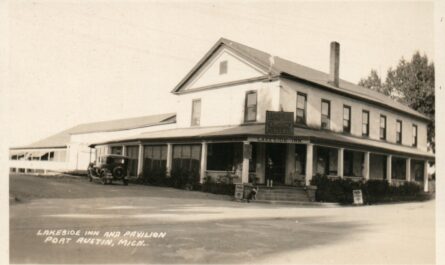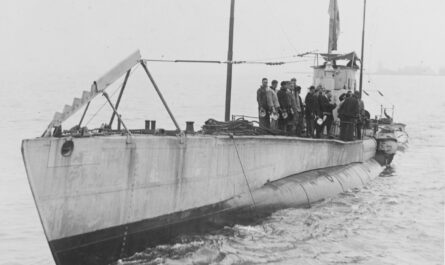Bay City rose on the Saginaw River as lumber money turned into industry, transit, and civic life. By the early 1900s, the mills were fading, but new enterprises—shipbuilding, sugar processing, crane manufacturing, and catalog homes—powered the city forward. This overview centers on the period 1890–1930 while noting key events that shaped the History of Bay City Michigan.
Video – Bay City’s 1900s Glow-Up: The Shocking River Secret They Don’t Teach in School
Quick Timeline: 1890–1930
| Year | Event | Why it matters |
|---|---|---|
| 1890s | Street railways and interurbans knit together West Bay City, Bay City, and resort sites | Cheap, frequent mobility for workers and leisure trips (e.g., Wenona Beach) |
| 1905 | West Bay City merges into Bay City | Creates a single city on both banks of the Saginaw River |
| Dec. 23, 1906 | Fraser House hotel burns | Clears the prominent riverfront site later used for the Wenonah Hotel and park |
| 1906 | Michigan Sugar Company formed, HQ in Bay City | Sugar beets replace timber as a regional economic base |
| Nov. 9, 1908 | Wenonah Park and Wenonah Hotel open | Public riverfront and first-class accommodations anchor downtown civic life |
| Apr. 1912 | High water floods interurban tracks | Street/interurban service disrupted; shows vulnerability of low-lying rights-of-way |
| 1910s–1920s | Defoe expands from boats to Navy contracts; Industrial Works grows crane output | War orders and heavy industry sustain jobs after the lumber era |
Setting the Stage: A River City Consolidates
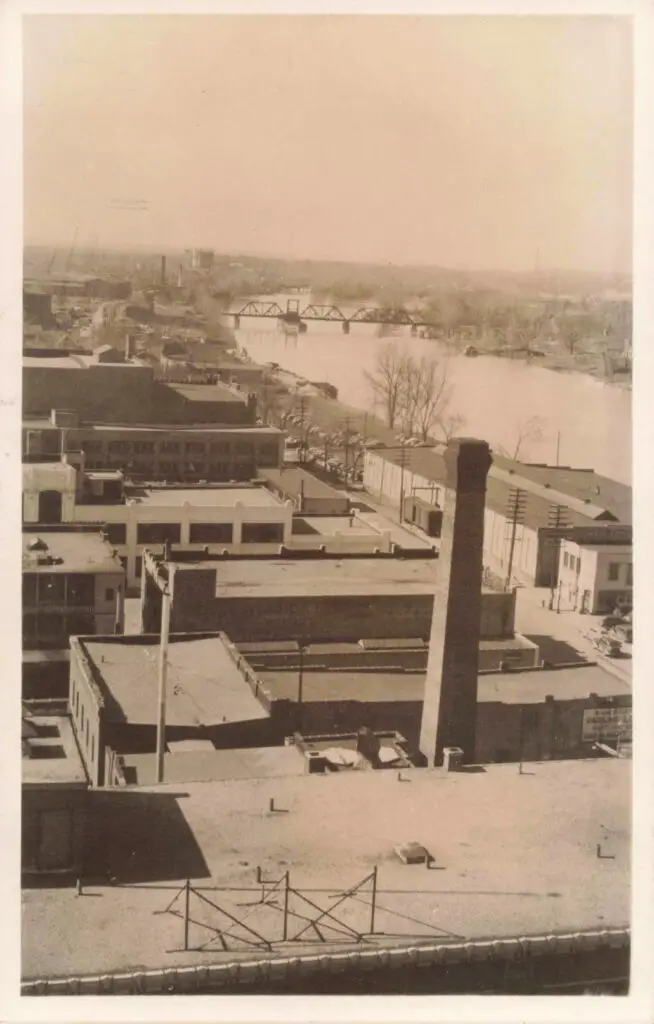
The History of Bay City Michigan begins with a river landing called Lower Saginaw. Traders like Leon Trombley built early cabins in the 1830s. The village incorporated as a city in 1865. Across the river, Banks, Salzburg, and Wenona combined in 1877 as West Bay City. In 1905, voters approved consolidation. One government now managed both banks, aiding coordinated infrastructure, parks, and utilities—important groundwork for 20th-century growth.
After Lumber: Industry Takes the Lead
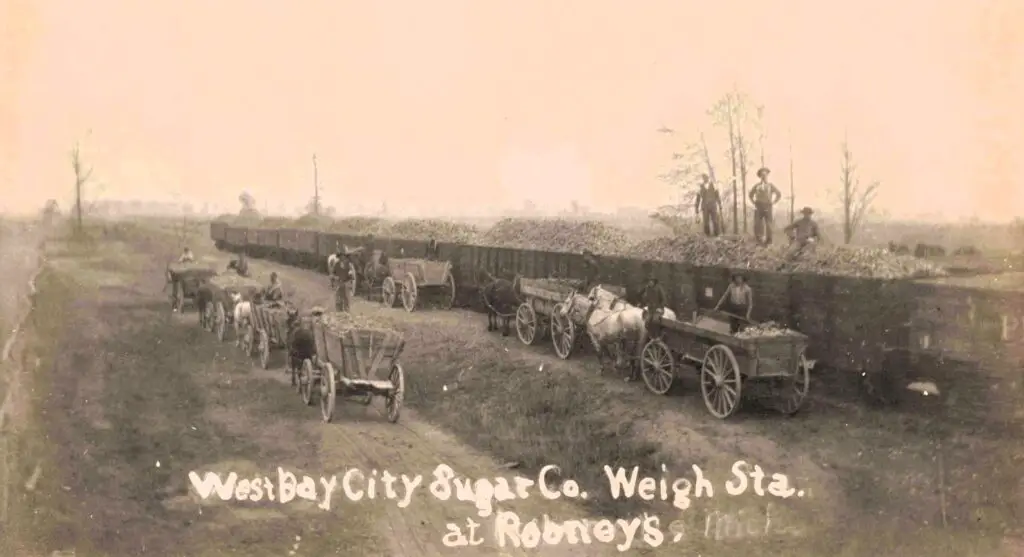
By 1900, sawlogs dwindled. Industry stepped in.
- Sugar beets. Michigan Sugar Company formed in 1906 and headquartered in Bay City. Its factories—still operating in Bay City and nearby towns—processed a farm product into a packaged food staple. The company would employ hundreds seasonally and year-round, stabilize farm incomes, and brand the region with Big Chief and Pioneer sugar.
- Shipbuilding. Harry J. Defoe’s small boat shop (1905) grew into Defoe Shipbuilding Company. World War I brought Navy contracts; by World War II, Defoe’s “roll-over” construction method turned out patrol craft and destroyer escorts at high speed. Shipbuilding kept the Saginaw River waterfront busy with skilled trades and launched vessels across the Great Lakes and to the coasts.
- Heavy cranes. Industrial Works, later Industrial Brownhoist, pioneered railroad wrecking cranes and wharf cranes. These Bay City-built machines became standard gear for railroads and ports worldwide, tying local metalworking and foundry skills to national markets.
This shift explains why the History of Bay City Michigan does not end with lumber. It resets with manufacturing that carried the city through the 1910s and 1920s.
Two Cities Become One (1905)
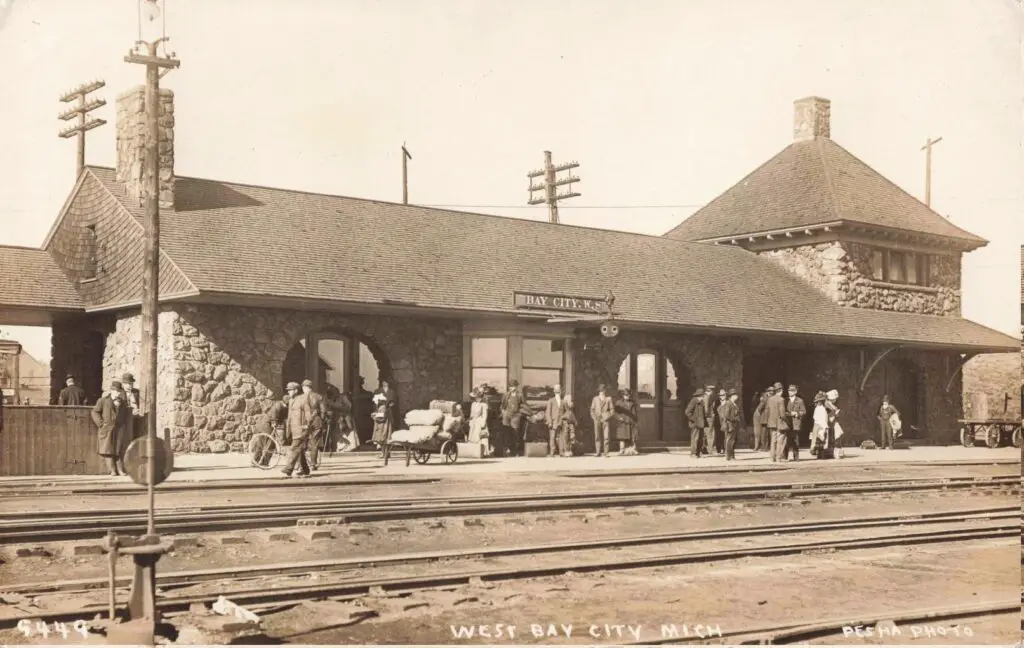
On the east bank stood Bay City. On the west bank stood West Bay City. Voters combined them in 1905, making a single municipality along both shores. The move streamlined services, road paving, and parks. It also reflected how residents already lived—crossing the river daily for work and trade.
Homes “Built in a Day”: Aladdin and the Catalog Era
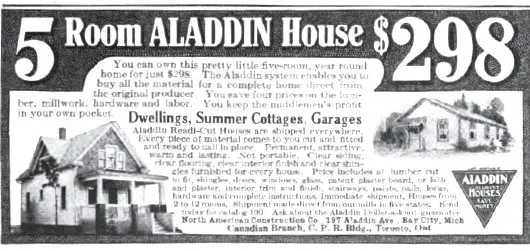
Bay City was also a headquarters town for early ready-cut houses. In 1906, brothers Otto and William Sovereign launched the Aladdin Company here, selling numbered lumber kits shipped by rail. Aladdin was among the longest-lived catalog-home firms in North America, with more than 75,000 houses sold. The model appealed to workers and managers alike, and Bay City’s rail links and lumber expertise made it a natural home base.
Parks, the River, and a Downtown Front Door
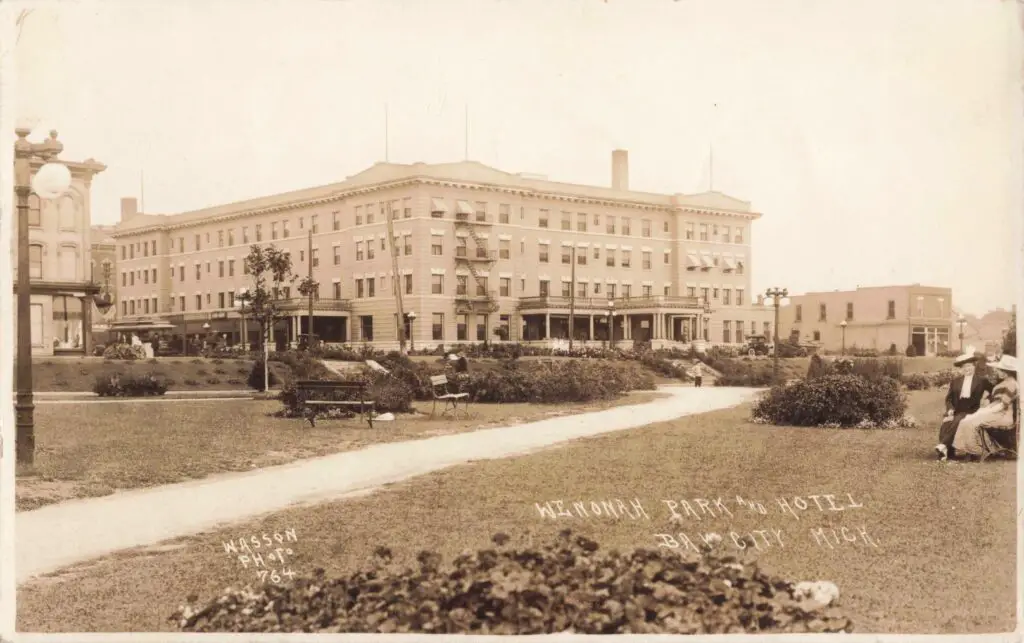
The riverfront was both a working harbor and a civic stage. In 1908, Wenonah Park opened as a public green on the east bank, paired with the Wenonah Hotel across Center Avenue. The hotel offered modern, almost “fire-proof” construction for traveling business leaders and visiting families. Together they framed a formal front door to the river and downtown, hosting concerts, pageants, and public ceremonies through the 1910s and 1920s. (The park remains central to community events today.)
Note: The Wenonah Hotel later met a tragic end in a 1977 fire, but the park endures as a core gathering space on the river.
Streetcars, Interurbans, and the 1912 High Water
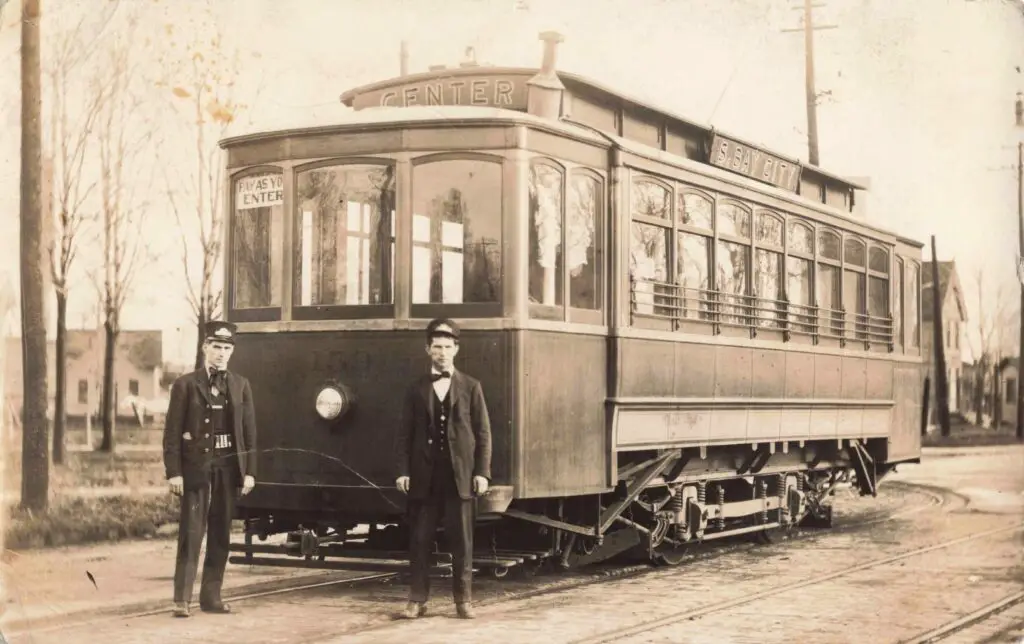
Electric streetcars carried workers between neighborhoods and mills, while interurban lines extended trips to Saginaw and the lakeshore resorts. The Bay City–Saginaw interurban offered frequent service; another line reached Wenona Beach Amusement Park, a popular shorefront destination.
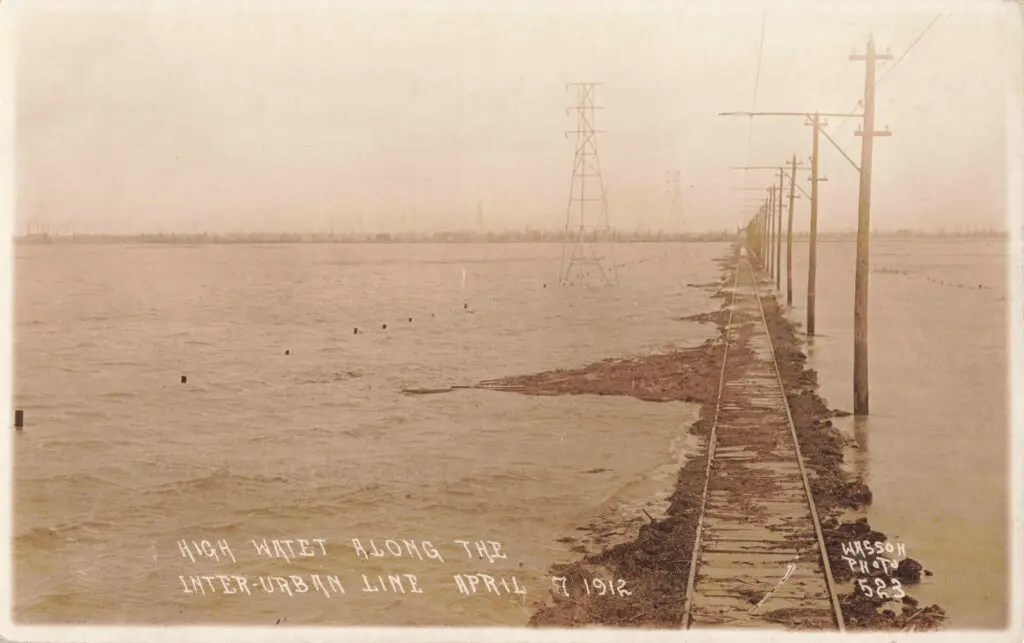
In April 1912, high water flooded track segments—captured in a period photo labeled “Inter-urban tracks April 8, 1912”—and service took a hit until waters receded and repairs were made. It was a reminder that low river flats were efficient rights-of-way but at risk during spring surges.
Fire and Rebuilding (1906–1916)
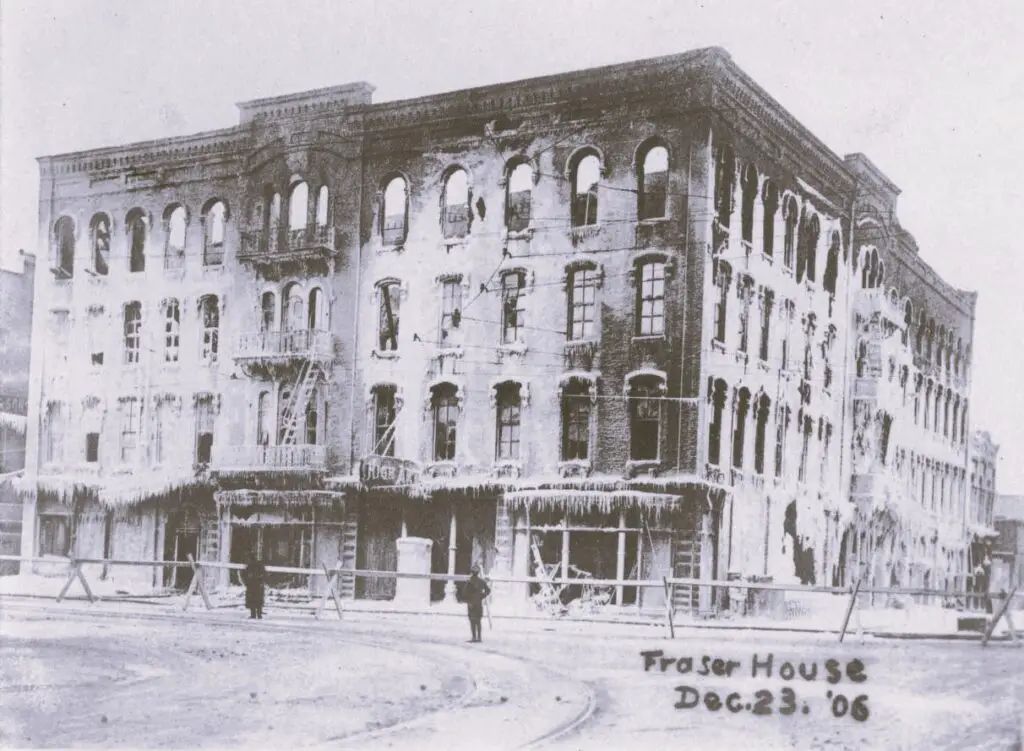
Bay City knew fire. On December 23, 1906, the Fraser House—once the city’s premier hotel—burned on Christmas week. The loss became a citywide marker: old lumber-era downtown giving way to stricter codes and new brick.
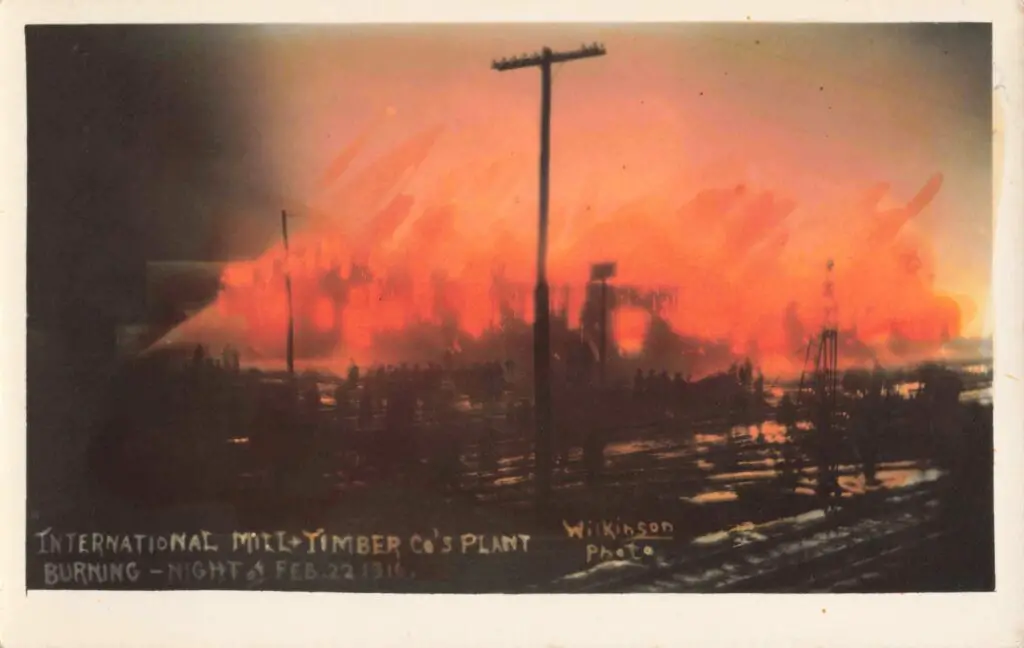
Industry burned, too. Nearly a decade later, flames consumed the International Mill & Timber Company at night in February 1916. These events spurred changes to fire prevention, materials, and water service.
People, Growth, and the Census Snapshot
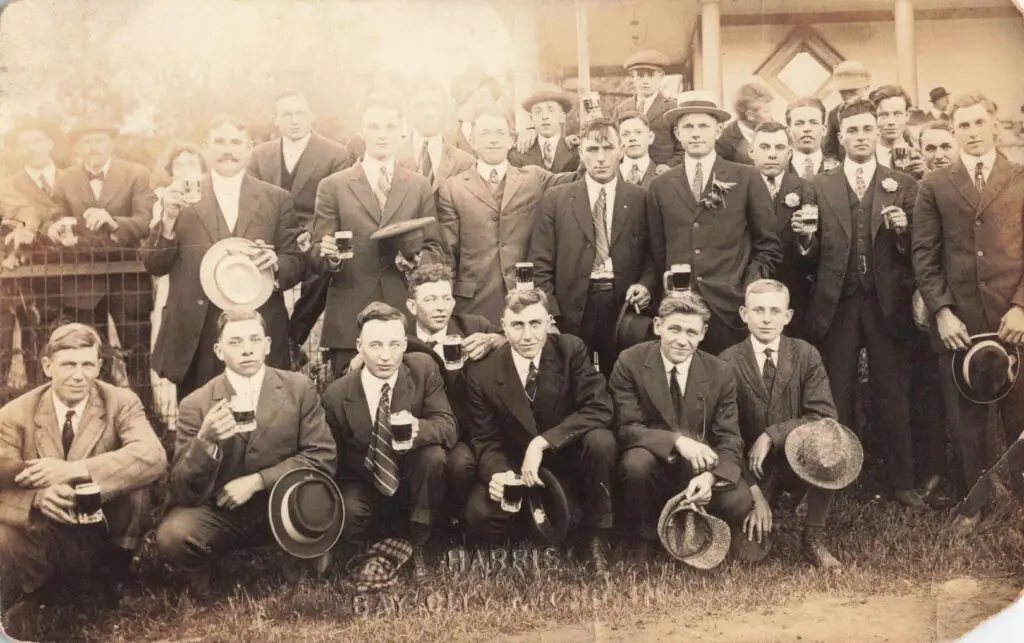
By 1910, Bay City ranked among Michigan’s larger cities, reflecting the combined population after the 1905 merger and the ongoing pull of factory and dockside jobs. Federal bulletins and census tables show the city in the tens of thousands by 1900–1910, with steady growth as industry matured.
What Endures
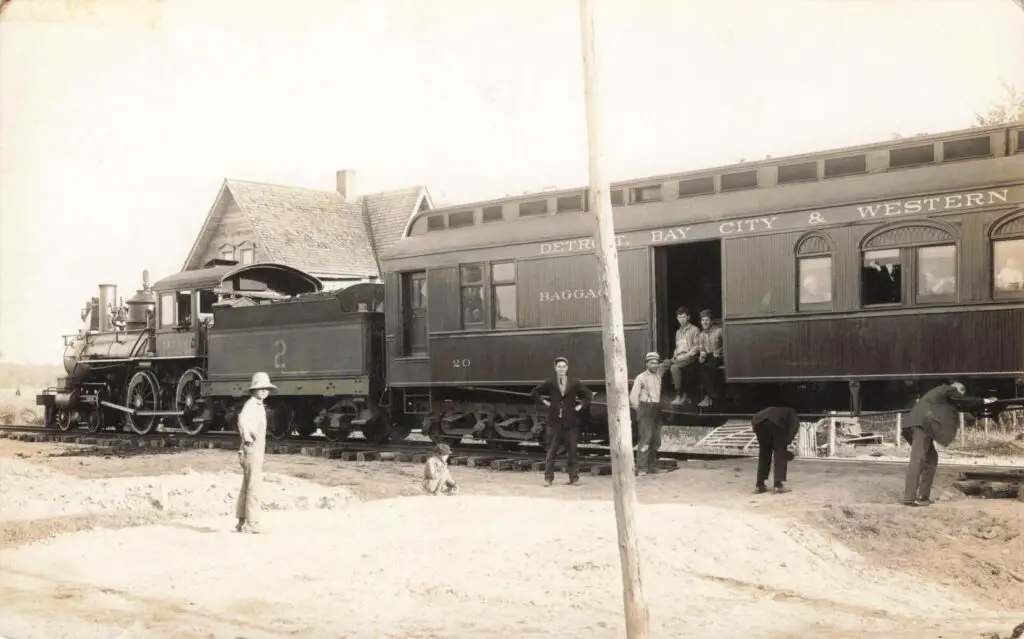
The industrial mix assembled here—ships, cranes, sugar, catalog homes—explains how the History of Bay City Michigan pushed past the timber era. It also left artifacts you can still visit or research: surviving Aladdin neighborhoods, company histories, and the Saginaw Valley Naval Ship Museum’s USS Edson, a Cold War destroyer moored on the river.
Key Takeaways (List)
- Consolidation in 1905 unified government and accelerated improvements.
- Michigan Sugar (1906) anchored an agricultural-industrial economy.
- Defoe Shipbuilding and Industrial Works kept skilled trades in demand through wars and peacetime.
- Wenonah Park and the adjacent hotel (1908) gave downtown a civic heart on the river.
- Streetcars and interurbans connected work, shopping, and leisure; spring flooding in April 1912 exposed their vulnerabilities.
Why It Still Matters – History of Bay County
The History of Bay City Michigan shows a city that adapted. It redeployed lumber wealth into factories, linked workers by electric rail, opened its best riverfront land as a public park, and exported products worldwide. That legacy still shapes the waterfront, the street grid, and the civic calendar today.
FAQs of Bay City
What is the oldest house in Bay City, Michigan?
The Trombley/Centre House (Trombley House)—a Greek Revival home built circa 1837 by Joseph and Medor Trombley—is widely recognized as Bay City’s oldest surviving house (and the oldest frame house still standing in Bay County). It now sits in Veterans Memorial Park at 901 John F. Kennedy Drive after being relocated there in 1981.
What is Hell’s half mile in Bay City, Michigan?
Hell’s Half Mile was Bay City’s late-1800s red-light and saloon district—a rough, six-block stretch along Water Street on the downtown riverfront where lumberjacks and sailors spent wages in bars, gambling rooms, and brothels. The name survives today in the city’s annual Hell’s Half Mile Film & Music Festival.
Who founded Bay City, Michigan?
Leon Tromblé—often spelled Leon Trombley—is credited as Bay City’s first settler. He built a log cabin on the east bank of the Saginaw River in 1831, in the settlement then called Lower Saginaw.
Works Cited
“Aladdin Company of Bay City | Clarke Historical Library.” Central Michigan University.
“Aladdin Catalogs | Clarke Historical Library.” Central Michigan University.
“Defoe Shipbuilding.” ShipbuildingHistory.com.
Holm, Eric. “History of the Defoe Shipbuilding Company.” Michigan Tech, Military History of the Upper Great Lakes.
“Iron Works: Industrial Works and the Locomotive Crane.” Construction Equipment.
“About Us – Michigan Sugar.” Michigan Sugar Company.
“History – Michigan Sugar.” Michigan Sugar Company.
“Bay City—Saginaw Inter-Urban Tracks (April 8, 1912).” Detroit Public Library Digital Collections.
“Michigan Interurbans.” American-Rails.com.
“Saginaw–Bay City Railway Company.” MichiganRailroads.com.
“History of Bay City.” City of Bay City.
“Wenonah Park.” (With references to Bay City records and press.)
“Population of U.S. Cities (1910 Census).” U.S. Census Bureau.
“Bay City, Michigan.” (Used for Fraser House fire date and cross-checks.)



